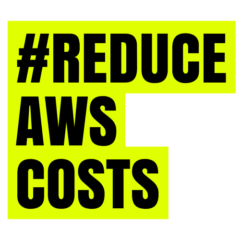Optimizing costs within Amazon Web Services (AWS) is a pivotal facet of effective cloud management. It encompasses strategic endeavours aimed at amplifying efficiency, reducing expenditures, and ensuring that your AWS infrastructure aligns seamlessly with your business goals. Let’s delve into the core of AWS cost optimization and understand why it stands as a fundamental practice for organizations navigating the complexities of the cloud era.

Understanding Cost Optimization in AWS
Cloud cost optimization involves minimizing your business’s overall spending on AWS cloud computing by identifying mismanaged resources, leveraging capacity reservations for better discounts, reducing data transfer costs, and eliminating unnecessary expenses.
Renowned analysts, including Gartner’s Craig Lowery and Brandon Medford, highlight that businesses often unknowingly waste up to 70% of their cloud costs. To better understand and manage AWS cloud costs, it’s essential to recognize various factors affecting cost estimates, such as AWS server types, server quantity, database usage, storage capacity, data transfer costs, and domain expenses.
Breaking down AWS costs and providing insights on how to calculate them efficiently, here is a comprehensive guide. By understanding the nuances of these cost factors, businesses can make informed decisions to optimize their AWS spending effectively.
Implementing cost optimization techniques in AWS enables your business to trim its cloud computing budget while maintaining the necessary performance and capacity. Over time, these practices contribute to achieving the highest savings potential, aligning with your business’s overarching goals. Consider the prudence of saving significant amounts and redirecting the budget towards expanding your organization’s capabilities and reach.
1. Maximizing Value
Cost optimization in AWS goes beyond mere cost-cutting. It’s about maximizing the value you derive from your cloud investment. This involves striking the right balance between performance, functionality, and expenditure.
2. Scaling Responsibly
AWS offers the advantage of elastic scalability, allowing you to scale resources up or down based on demand. Cost optimization involves leveraging this flexibility to ensure that you’re using resources efficiently, avoiding overprovisioning during periods of low demand.
3. Choosing the Right Pricing Models
AWS provides various pricing models, including On-Demand, Reserved Instances, and Savings Plans. Cost optimization requires a thoughtful evaluation of these models to choose the one that best aligns with your workload characteristics and budgetary constraints.
4. Identifying and Eliminating Waste
One of the key principles of cost optimization is identifying and eliminating unnecessary expenses. This may involve identifying and decommissioning underutilized resources, selecting the right-sized instances, or optimizing storage solutions.
5. Embracing Automation
Automation plays a pivotal role in cost optimization. Automating routine tasks, implementing auto-scaling, and utilizing infrastructure as code (IaC) not only enhance operational efficiency but also contribute to cost savings by eliminating manual errors and ensuring resource efficiency.
6. Continuous Monitoring and Analysis
The cloud environment is dynamic, and workloads evolve over time. Cost optimization is an ongoing process that involves continuous monitoring and analysis of your AWS usage. Tools like AWS Cost Explorer and AWS Trusted Advisor can provide valuable insights into spending patterns and offer recommendations for improvement.
7. Implementing Tagging Strategies
Tagging resources with metadata facilitates better cost allocation and resource tracking. Cost optimization involves implementing effective tagging strategies to gain visibility into how resources are utilized across different teams, projects, or departments.
8. Educating Teams
Building a cost-conscious culture within your organization is crucial for sustained cost optimization. Educate teams on AWS best practices, cost management tools, and the financial implications of their decisions to encourage responsible resource usage.
Benefits of Cost Optimization in AWS
- Cost Efficiency
Achieve more with less by optimizing your resource allocation and utilization. - Budget Control
Maintain control over your AWS spending and avoid unexpected costs with proactive optimization strategies. - Enhanced Performance
Ensure that your AWS infrastructure is tuned for optimal performance, providing a better user experience for your applications. - Strategic Resource Allocation
Allocate resources strategically based on the actual needs of your workloads, avoiding unnecessary expenses. - Business Agility
Cost optimization allows you to respond quickly to changing business requirements without compromising financial stability.
In conclusion, cost optimization in AWS is not just a financial exercise; it’s a strategic imperative for organizations looking to thrive in the cloud. By embracing a proactive and continuous approach to cost optimization, businesses can unlock the full potential of AWS while maintaining a balance between innovation, performance, and fiscal responsibility.




